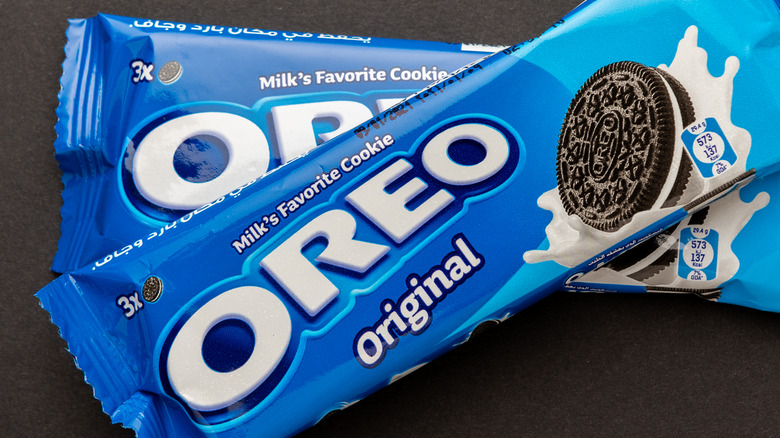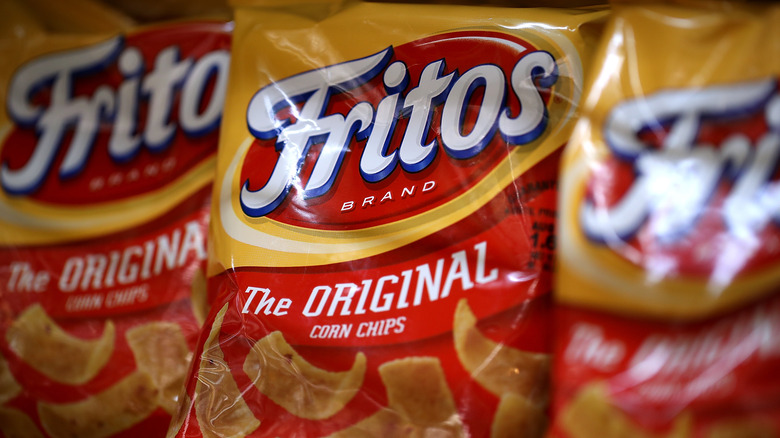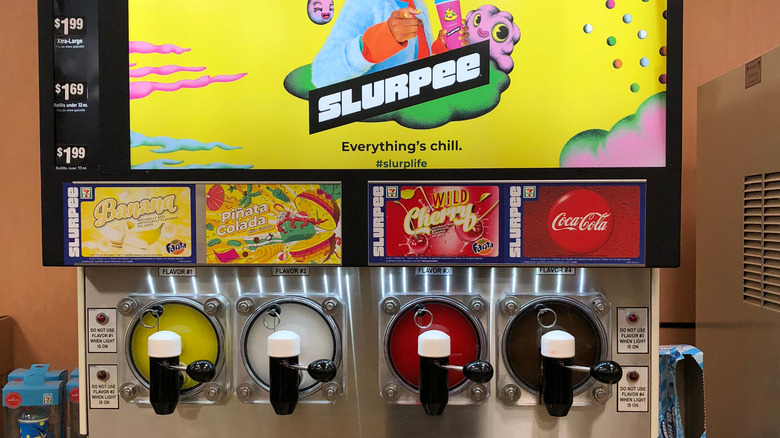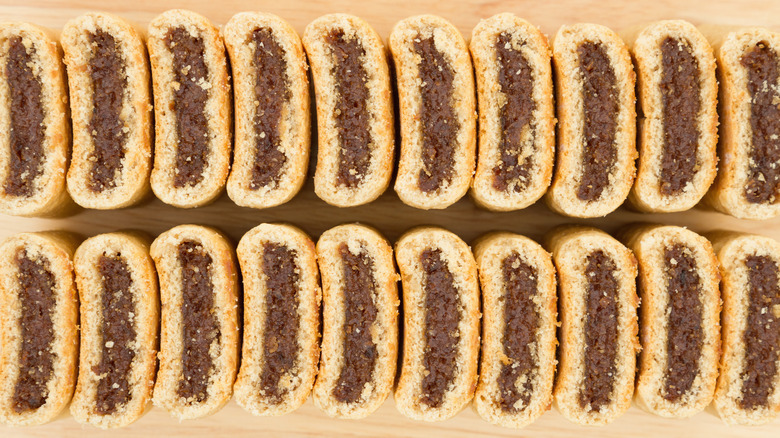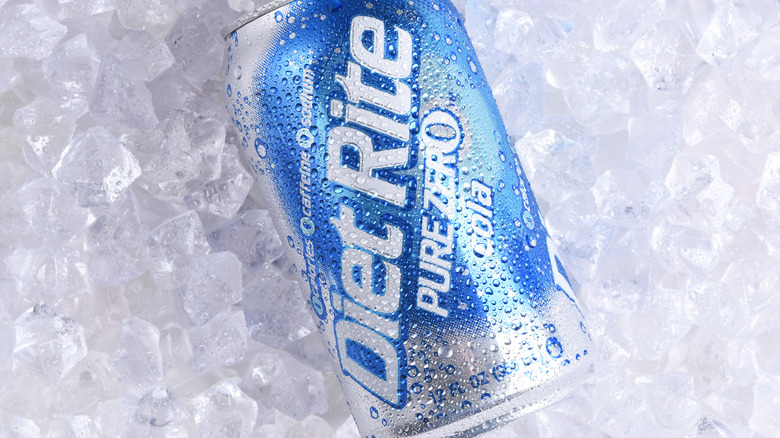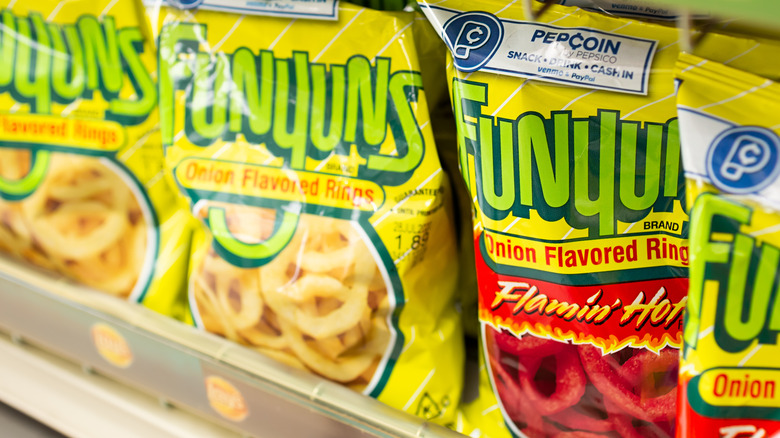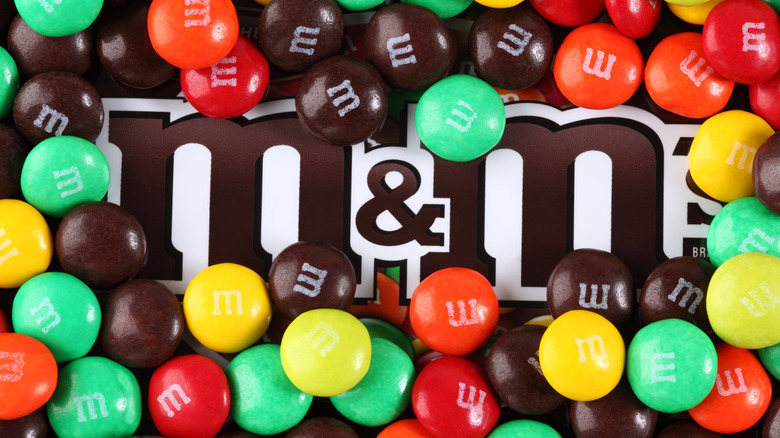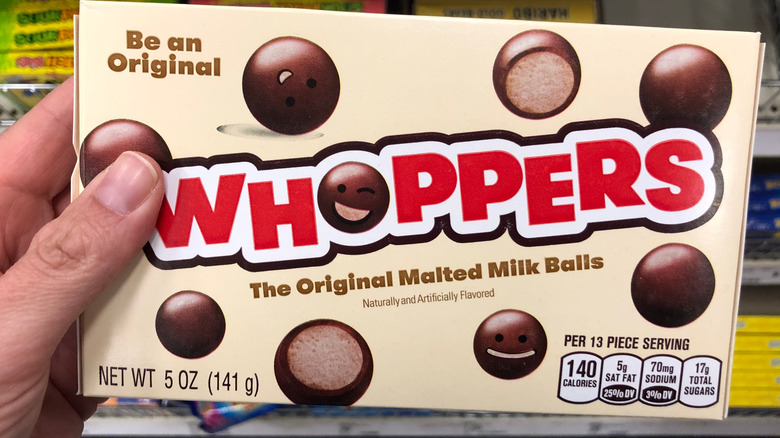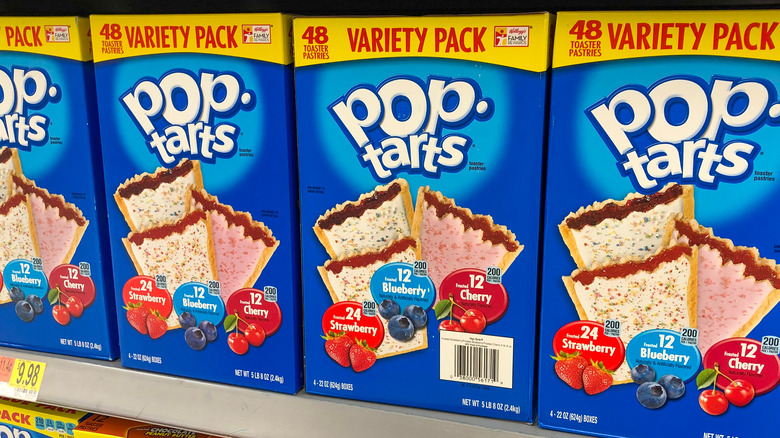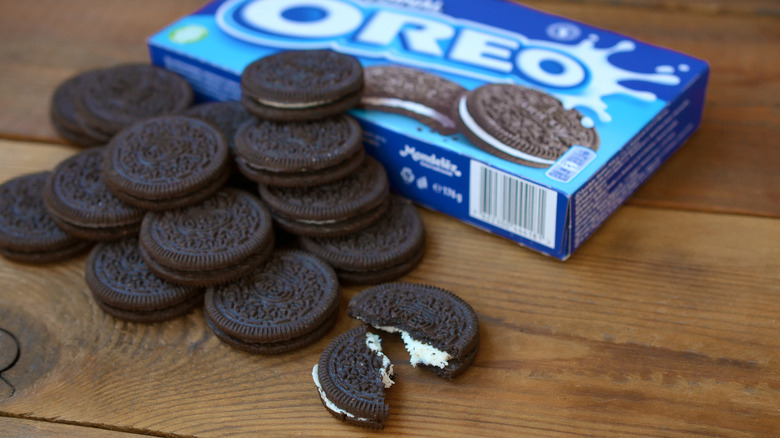9 Fan Favorite Snacks That Are Actually Total Rip-Offs
There's certainly no shortage of snack foods in the Western world. The United States, Canada, and most of Europe enjoy an abundance of delicious if questionably healthy or not at all nutritious foods to fill us up when we're hungry on the go or need a brain-and-stomach-pleasing blast of sugar, fat, or salt. There are literally hundreds of options at the ready, from candy bars to soft drinks to cookies to chips. The most popular items seem to be the ones that have endured, reliable sources of quick calories, and quicker smiles that have been part of the cultural landscape for so long, we mostly just assume that whoever put them in the stores invented them, too. But that's not always the case — the food business can be a cutthroat world where imitation isn't the most sincere form of flattery, it's a kind of theft.
Here are some of today's most popular snack and convenience foods. They're packed with flavor, fun ... and secrets — because every single one is based upon (if not completely stolen from) a preexisting food that their makers probably wouldn't like the world to know about.
1. The man who created Frito's bought the recipe
Big-time chip and snack company Frito-Lay originated as two separate snack makers. According to the Texas State Historical Association, H.W. Lay and Company of Atlanta turned potato chips into a national obsession, while the Texas-based Frito Company made a name for itself as a producer of a novel, bite-size corn chip.
In 1932, C.E. Doolin's family owned the Highland Park Confectionery. He wanted to add something salty and savory to the candy, and figured out what when reading the San Antonio Express one day. In the midst of the Great Depression, a man named Gustavo Olguin ran a classified advertisement offering a recipe for fried corn chips, as well as the equipment necessary to make them (a modified potato ricer), and the contact information for 19 area retailers who stocked the product already. Olguin's asking price: $100. Doolin paid up and started his own spinoff of the Highland Park candy company, and by 1934, he had multiple plants up and running making what he called "Fritos" and was well on his way to international success. "Fritos" is Spanish for "fried," and although Texas borders Mexico, Doolin's product is similar to the popular Mexican-based food item known as tortilla chips. Both Fritos and tortilla chips are made from ground cornmeal, water, and salt, but Fritos dough is pushed through an extruder and then fried while tortilla chips are first cooked into tortillas, then cut and fried.
2. The Slurpee is a another product with a different name
Convenience stores are ubiquitous in the United States, with 7-Eleven leading the way. There are more than 9,000 outlets in the U.S. alone, and they all proudly serve the company's signature in-house product: the Slurpee, a psychedelically packaged, serve-yourself, slushy beverage that combines sweet, syrupy flavor with slushy, partially-frozen liquid. So popular is the Slurpee that it's approaching generic trademark status — countless people call any sugary slushy beverage a Slurpee the way they call all tissue Kleenex or any bandage a Band-Aid.
Usually, such products become so entrenched because they were original creations. This isn't so for the Slurpee. In the late 1950s, according to CNN, a Kansas City Dairy Queen franchisee named Omar Knedlik suffered a broken soda machine and put some soda bottles in a freezer to keep them cold. Instead, they half-froze and turned to slush. Customers liked them this way, and before long, he'd built a machine out of a car air conditioner purpose-built to make those drinks. The winning entry in a name-this-product contest: ICEE. Knedlik sold a bunch of ICEE makers to convenience stores. Then 7-Eleven licensed the technology to use in some of its locations. The company tasked ad man Bob Stanford with coming up with a new name — executives didn't want to call the drink ICEE, and instead make the product seem like an in-house original. Stanford came up with "Slurpee," imitating the sound the drink made when sucked through a straw.
3. Fig Newtons are actually hundreds of years old
In the packaged cookie world, chocolate reigns supreme. Cocoa-oriented brands like Chips Ahoy! and Oreo tend to dominate, but then there's the oddity that is the Fig Newton. Inside of a dough that's both soft and crumbly comes a zesty, thick fruit paste. Yes, the Fig Newton was truly one of a kind when the Kennedy Biscuit Company introduced it in 1891. The Boston-based company (which would later merge with another bakery to become Nabisco) named the cookie after the nearby town of Newton, Massachusetts.
But the cookie certainly wasn't invented there or anywhere near it. The Fig Newton is merely the modern, mass-produced incarnation of a treat that dates back hundreds of years, to the Age of Exploration in the 1600s. According to CNN, figs were a dietary staple in Egypt, and bakers learned that if a fig paste was baked into a simple pastry, the concoction could last for months on end. Fig rolls caught on in Europe and came to the U.S. in the 19th century, but as a medicinal cure. Conventional medical wisdom at the time held that many ailments were related to poor digestion, a problem treated by eating fruit and simple cookies or biscuits. Enter the Fig Newton, which took the fig roll into the modern age.
4. Diet Rite was the first sugar-free cola
Soft drinks — also known as soda or pop, depending on where you live — are a huge business. Who wants something calorie-free like water when they can have a sweet and fizzy Diet Coke or Diet Pepsi? They're just as sweet and offer a kick of both slightly spicy flavor and caffeine found in their full-calorie counterparts, Coca-Cola and Pepsi. According to Caffeine Informer, both rank among the top 10 bestselling brands of soda in the U.S., and they've been consistently popular since their introductions decades ago. Diet Pepsi hit stores in 1964, per the Baltimore Sun, while Diet Coke came along in 1982. And while it was revolutionary when the two biggest cola makers introduced sugar-free versions of their flagship product, they were hardly the first diet colas widely available in the United States.
Perpetually third-place cola conglomerate Royal Crown, or R.C., was the first and only diet soda maker for nearly half a decade. In 1958, the company started bottling Diet Rite, until Coca-Cola came up with the now-discontinued Tab in 1963, followed shortly by Pepsi with Patio — later renamed Diet Pepsi. While other, non-cola carbonated beverages had been available for some time before Diet Rite, R.C.'s pioneering drink was the first not marketed almost solely to diabetics — it took on "Big Cola" while simultaneously tapping into the emerging American notion of weight-consciousness, according to Mental Floss.
5. Funyuns aren't the original circular onion treat
Frito-Lay's chip alternative Funyuns are, technically and literally speaking, onion rings, but they're not like the onion rings that come alongside a burger in a diner. They're not battered and deep-fried whole onion slices, but rather cornmeal seasoned with onion powder that's fried and shaped into circles, according. Devised by Frito-Lay's George Bigner and hitting store shelves in 1969, Funyuns are not that different from other Frito-Lay signature snacks — Cheetos are similarly made by pushing cornmeal through an extruder then frying it and adding flavoring ingredients.
It's a relatively simple process, so it may not have surprised Frito-Lay, the industry leader in chips and chip-adjacent bagged snacks and sandwich accompaniments, when it was ready to place its onion-flavored cornmeal rings into thousands of stores in the late '60s, only to find that such a product already existed. Rudolph Foods, a much smaller snack food concern, had been in business since 1955. Primarily a manufacturer of pork rinds, Rudolph also distributes a product called OnYums, described on its packages as "onion flavored rings." Rudolph had already trademarked the onion-punning name OnYums by the late '60s — which is when Frito-Lay wanted to call its identical product ... OnYums (according to The Week). Thanks to Frito-Lay consultant, University of North Texas professor Jim Albright, the company had another wordplay-derived name at the ready: Funyuns.
6. M&Ms are a shameless imitation of a popular British treat
Tiny round pieces of chocolate, encased in a thin, hard, brightly-colored candy shell — whether that conjures images of Smarties or M&Ms is probably dependent on where one grew up. According to the BBC, English confectionery firm H.I. Rowntree & Co. (owned by Nestlé since 1988) started making Smarties in 1882, the oldest chocolate candy in its product portfolio. Predating those are comfits — Italian for confetti — nuts and seeds coated in sugar and tossed at brides on their wedding day in the Middle Ages of Europe. By the 15th century, comfits had evolved into a digestion aid in England, and by the 19th century, the nuts and seeds had been replaced with chocolate. Such candies were especially popular in France, under the name Crotte de Lapin — French for "rabbit poop," because that's what those tiny chocolates resembled.
Smarties came from European candy traditions, while M&Ms came from Smarties. According to The Guardian, in 1937, Mars Inc. founder Forrest Mars, Sr. visited Spain during the Spanish Civil War, alongside Rowntree executive George Harris. Mars saw soldiers eating Smarties, which didn't melt in the hot sun because they were encased in a candy shell, and took the idea home to the U.S. where his company started producing M&Ms. He named them after himself and Bruce Murrie, a business partner who happened to be the son of an executive at rival candy company Hershey, per History.
7. A Whopper of a story about the spread of malted milk balls
While Forrest Mars, Sr. lifted a popular English candy to create a new one in the United States, he also found himself on the other side of the situation. Frank C. Mars, head of American candy business Mars. Inc., didn't wish to take the company international, against the wishes of his son and colleague, Forrest Mars. The younger Mars eventually left the company for England, where he started up his own candy company, according to The Guardian, which included among its innovations a bagged, bite-sized candy called Maltesers. Hitting stores in the U.K. in 1937, according to Candyblog, the candy was composed of malted milk balls covered in chocolate. Just two years later, the American firm Overland Candy Company launched Giants — malted milk balls covered in chocolate. Within a decade, Overland would become part of Leaf Brands, who'd relaunch Giants as Whoppers.
It gets more complicated. Maltesers are one of the most popular candies in the U.K., and they're sold as a novelty import item in the United States where Hershey (which bought many Leaf, and thus Whoppers, in 1996 according to the Wall Street Journal) controls the American trademark for "Malteser," according to Confectionary News. That means Hershey can legally distribute both Whoppers, a clone of the original, British Maltesers, as well as another copycat called Maltesers, which has no connection to its English counterpart.
8. Pop-Tarts popped because County Squares sputtered
Pop-Tarts make for a quick and convenient breakfast. One hermetically sealed foil pack holds two very thin pastries, sometimes frosted and sometimes not, and filled with fruit jam, chocolate, or cinnamon and brown sugar, and they don't even require heating. Cereal dominant Kellog's expanded its hold on the breakfast sector upon the introduction of Pop-Tarts in 1964, just about six months after rival breakfast food company Post announced its plans to market a very similar product called Country Squares. That item — a thin pastry filled with fruity jam that stayed shelf stable for months — was an outgrowth of dog food. According to the Chicago Tribune, in the late 1950s, scientists in Post's pet food branch developed Gaines Burgers, moist and meaty dog food that didn't require refrigeration. Post technicians applied that food science to fruit and came up with Country Squares and announced the product at food industry events.
Country Squares were predicted to be a big hit, but Post went back to the lab to keep fiddling with the recipe. Months went by, which allowed Kellog's to rush-develop its copycat product, Pop-Tarts. Thanks to a massive marketing campaign, the upstart made it into more stores and more homes, completely overshadowing Country Squares when they finally did (and briefly) arrive.
9. America's original chocolate sandwich cookie isn't Oreo
There's arguably no packaged cookie more famous than Oreo. It's as simple as it is delightful — sweet and soft cream filling sandwiched between two crisp and chocolatey discs. It's the signature product of Nabisco and has spun off into numerous flavors and varieties, such as Oreo Thins and Oreo Double Stuf. Oreo shares shelf space with imitators and competitors, such as store-brand sandwich cookies, Newman-O's, and the identical-looking Hydrox. Ironically, that last one isn't an Oreo clone at all — it hit stores well before the Nabisco classic.
According to Atlas Obscura, Sunshine Biscuits introduced Hydrox sandwich cookies in 1908. The cookies with the terrible name take their title from a portmanteau of hydrogen and oxygen, the components of water, and it was meant to imply that the cookies were clean and pure. It may also remind eaters of hydrogen peroxide, or, as was more likely in the early 20th century, the Hydrox Chemical Company, which filed suit against Sunshine Biscuits for name infringement. At any rate, Hydrox never developed more than a small, devoted following in part because they're kosher, and somewhat for the unique taste — the cookies are slightly bitter, the filling not overly sweet. Nabisco took a spin on the Hydrox formula just four years after those cookies debuted, and its take clearly caught on.
